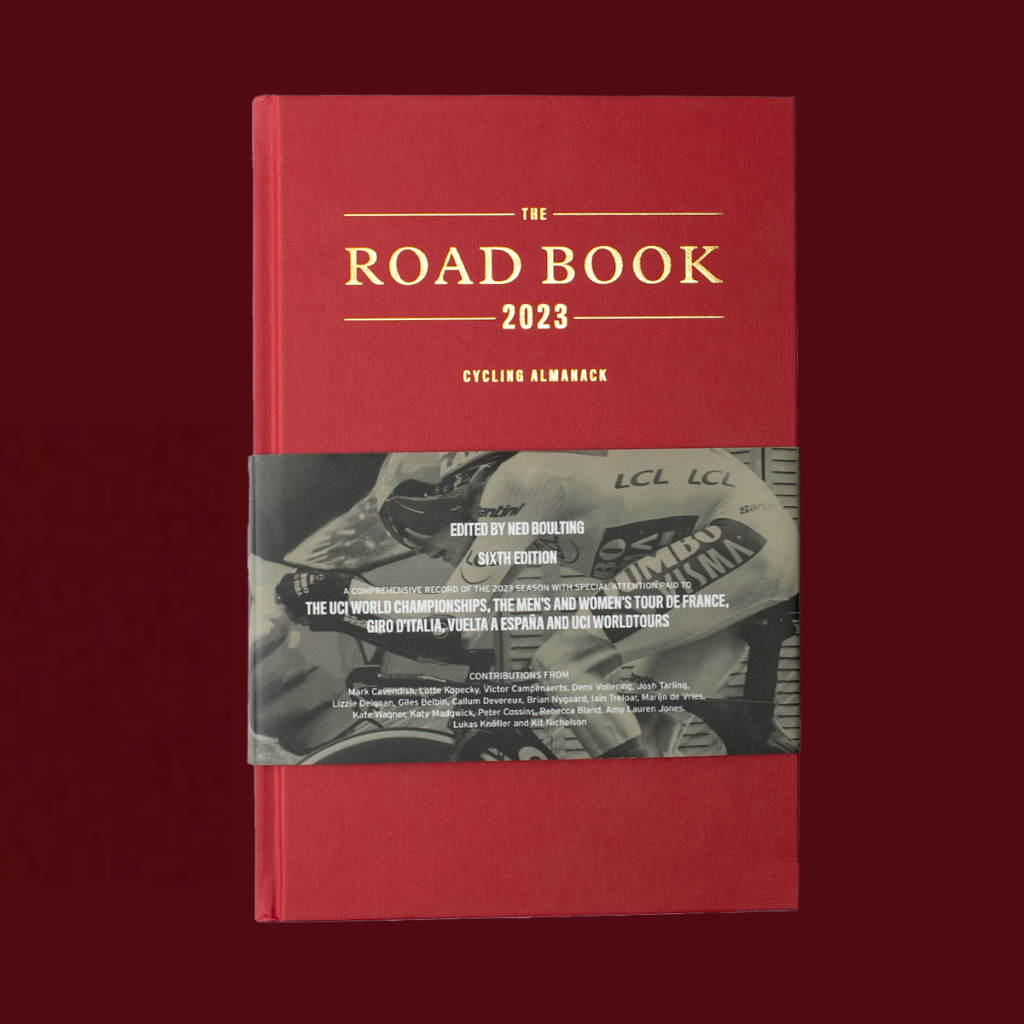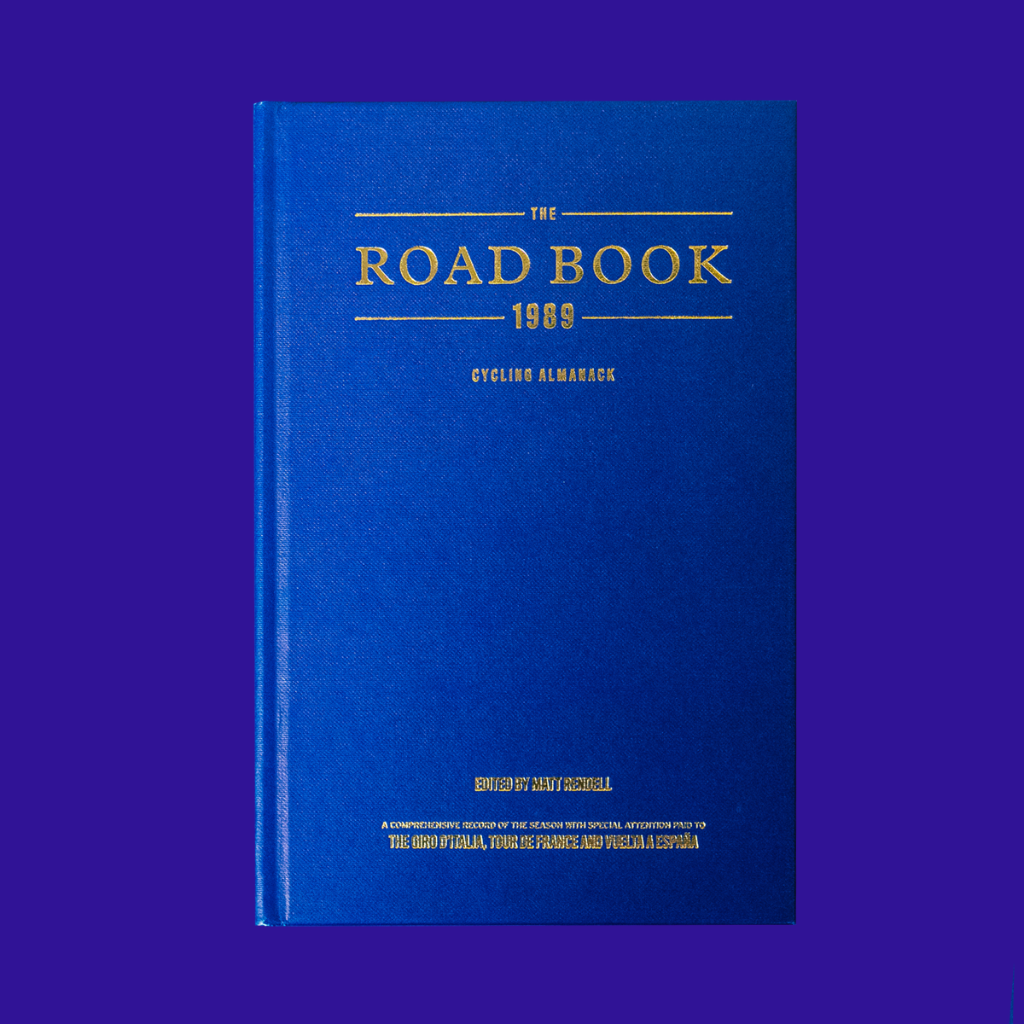Now we don’t know about you, but we’re still reeling from Pogačar’s astonishing opening to the Italian Classics. In the immortal words of Tom Pidcock: “What the fuck?”.
But if Strade Bianche has done nothing but whet your appetite for more racing, then there is Tirreno-Adriatico to look forwards to on Monday the 4th of March.
The ‘Race of the Two Seas’ is a classic in every sense of the word, and Primož Roglič’s decisive victory last year prompted Road Book contributor Brian Nygaard to write a brilliantly eloquent essay on why Tirreno-Adriatico holds a special place in his heart. This extract from ‘Between Roglič and My Heart’s Place’ from The Road Book 2023, beautifully captures the lazy nostalgia of one of Italy’s best loved races.
I had made other plans after finishing university but got offered the chance to help [Bjarne] Riis’s team at the Tour, working as his press officer. A few weeks later I stood with my suitcase and a bike on Piazza San Francesco in Lucca. It was blisteringly hot and I didn’t really have a clue what I was doing there. I didn’t speak Italian but, fuelled by the idea of a different adventure after years of being stuck in a library in a country with four weeks of great weather a year, it seemed like the obvious thing to do – even if it was a little tricky trying to explain it to my parents, who were convinced I would pursue an academic career. I told them I was now sort of working in communications, which was a good place to start. I’m quite sure they didn’t really understand.
The following year, I worked on my first Giro d’Italia and it was a lot to take in. I had only been to Italy a few times before and I wasn’t able to really grasp just how big and multifaceted the country was. It wasn’t until Tirreno–Adriatico become a fixture in the race programme I followed that I began to understand this about Italy. It was the best possible way of learning. It was a relief after having worked on Paris–Nice for a couple of seasons. Tirreno–Adriatico was just such a delightful and welcoming race to follow. Back then a significant number of foreign journalists were there to write up stories for the upcoming spring Classics, and some of the best Italian writers were always there. I got to know some of them and, as my Italian and French improved, how they wrote about the sport made them heroes for me. People like Philippe Brunel from L’Équipe and Gianni Mura from La Repubblica. I still can’t believe that I walked into a restaurant one day in La Marche and found both of them there. To me, it was like walking in on Allen Ginsberg and Jack Kerouac having a meal.
The week-long race from the Tyrrhenian Sea to the Adriatic coast quickly became the one event that I really looked forward to every year. Every stage race is like a microcosmos, and I felt at home in this one. It’s a race that crosses the whole country, which is peculiar for various reasons. The big divide between the wealthy northern part of Italy and the rather impoverished and underdeveloped south is completely absent here. It’s as if the slice of interconnected regions in Tirreno–Adriatico somehow refuses to engage with the Italian idiosyncrasy of massive inequality, however real it may be.
Working at the race made me appreciate the almost secretive existence of Umbria, the rugged hinterland of Lazio. But above all, it made me love the other side of the country on the Adriatic coast – the lush hills of Le Marche and the slow, lazy coastal towns of Abruzzo sleeping late before the tourist invasion. Because the race was mostly held on weekdays, it gave an idea of what everyday Italian life looked like elsewhere. There were crowds of fans, but they were more moderate and less eager and exaggerated. Restaurant owners would ask about the race, and car mechanics would pop out to see it pass – not an hour-long wait along the road like you’d see at the Giro, but more a friendly nod of acceptance before going back to the usual rhythm of every day. Sometimes in the years when I was travelling a lot, I would wonder what that type of life would be like. Same job, same locations, same hours. But, with the thrill of the finish and then familiar faces at the team table later in the evening, I would forget about it or feel grateful for doing what I did. And so 16 years came and went that way.
Taking place in early March, Tirreno–Adriatico is a gateway to the Monuments – especially to Milan–Sanremo – and often the core of the teams would stay in Italy. I loved those days in between races, spent in lazy out-of-season hotels on the coast, basking in the sun and the quiet anticipation before the first Classic of the year. I worked with Fabian Cancellara for several seasons and he was extremely popular at the race. His father was Italian, from down in Basilicata, and it wasn’t hard for the Italians to turn him into a hero of sorts. Tirreno–Adriatico was usually a good indication of how Cancellara would fare at the Classics. If he was going too well in March, he’d generally not pick up a Monument as he had probably peaked a little too early. The years when he was slightly behind, something good was going to happen. In 2010 he rode his worst Tirreno–Adriatico but went on to win E3, Flanders and Roubaix. This logic doesn’t apply to everyone’s performance in the same way. Writing this now, I’m very curious to see how Primož Roglič will fare at the Giro d’Italia. Somehow, I actually think he will win it. [Roglič did indeed win the Giro. – Ed.]…
If that doesn’t get you excited for Tirreno-Adriatico, we don’t know what will. Nygaard’s wonderful essay sits amongst a pantheon of fantastic writing in The Road Book 2023, which sold out this year!
Thankfully, you’ll still be able to get your hands on a copy, as a reprint is currently underway, and copies will be available for purchase by Spring’s end. If you would like to be amongst the first to know when the book will be back up for pre-order, email us at: office@theroadbook.co.uk and we will add you to the waiting list.
Alternatively, pick-up a copy of any of our other editions for 20% off using the code: RETRO20 and read about every edition of the race since 2018 in detail.







